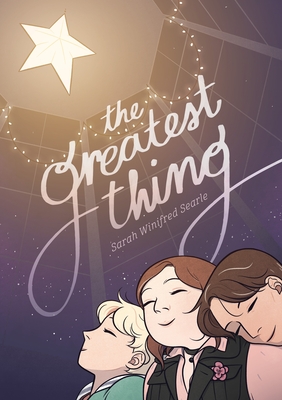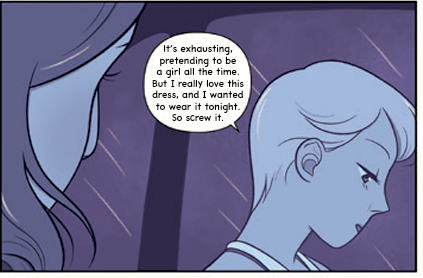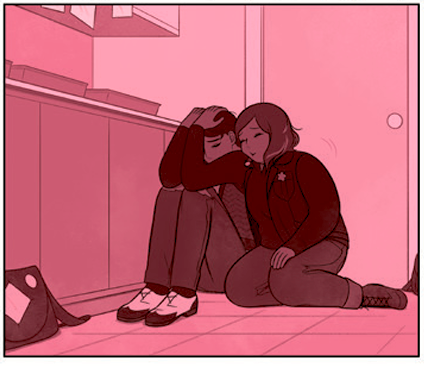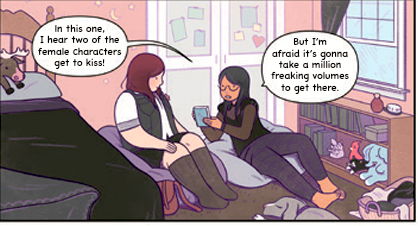
TL;W[on’t]R[ead the review]: This is a story about queer teens dealing with depression and eating disorders while holding on as tightly as they can to friendships and new love. The immense weight of these teens’ emotions is never diminished, and it seems to me (a very middle-aged lady) like this might be fabulous reading for a real YA audience (despite its “vintage” setting in 2002).
Content warnings: depression (including brief, fictionalized suicidal ideation), self harm [cutting], eating disorders, fatphobia [challenged], panic attacks, homophobia [challenged]
Summary [courtesy of Goodreads]: It’s the first day of sophomore year, and now that Winifred’s two best (and only) friends have transferred to a private school, she must navigate high school on her own. But she isn’t alone for long. In art class, she meets two offbeat students, Oscar and April. The three bond through clandestine sleepovers, thrift store shopping, and zine publishing. Winifred is finally breaking out of her shell, but there’s one secret she can’t bear to admit to April and Oscar, or even to herself—and this lie is threatening to destroy her newfound friendships.
[Note: This review is based on an eARC from NetGalley and First Second Books.]
This is a phenomenal graphic novel!! It’s not as light-hearted as most of the books I try to feature in Bud’s exuberant Kool-Aid-Man series, but it was so affirming and hopeful, even though its characters deal with severe depression, disordered eating, and slew of other mental health issues. In this beautifully drawn world, some kids and parents are realistically cruel and bigoted, but the majority are kind and encouraging, from main character Winifred’s cool mom to her exceptional art teacher.
I loved that this world straddles the line between wish fulfillment and realism, never pulling its punches on the severity of issues teens (particularly LGBTQIA+ teens) can face, but also never sinking into despair or fatalism. The core trio of Winifred and her newfound artsy friends Oscar and April are an absolute fucking delight to see come alive on the page, and their characterizations are each so profoundly well-developed by the end of the book. From Oscar’s bi identity and depression to April’s growing awareness that she’s likely non-binary (possibly agender?), even secondary characters’ representations are handled with nuance and depth.

As for Winifred (who, according to the note at the end, is very much based on author Sarah Winifred Searle’s own teenaged self), she’s one of the most richly developed characters I’ve ever read in a YA graphic novel. A budding comic artist and writer, she grows immensely over the course of the narrative. As she navigates a variety of problems, from her own internalized fatphobia and self-hatred to her related disordered eating (she skips meals and eats dairy despite her lactose intolerance to “punish” herself) to her clear clinical depression, the novel shows how her friends, mentors, and her own growing self-confidence create hope in a seemingly hopeless space. (The way Searle’s art captures Winifred’s depression is breathtaking, as is the way she uses the lighting of the teens’ high school darkroom to show heightened emotion as well.)

Winifred’s gradual realization over the course of the novel that she’s bi and very into her former close friend (who’s been trying to ask her out for over a year!) provides a lovely counterbalance to all the darkness as well. (Spoiler alert: the ending is very sweet!!) And all of this happens against the backdrop of a school art/photography class, with Winifred, Oscar, and April banding together to make fantasy zines (which are interspersed throughout the main narrative) that express their own struggles and hopes.

Maybe it helps that this is set in 2002, which makes these kids the same age I was then, but I really connected to this story. Despite being set 20 years ago, it’s truly a vital addition to YA, and a great read for Pride month (or anytime).
